Design for 2026 seems to be moving in two distinct, yet powerful directions: one that celebrates authenticity and humanity, and one that embraces digital innovation and AI-driven aesthetics. And in between? A beautiful blend of it all – and honestly, it has been fun to watch and implement.
Our team is seeing a fusion of artistry, authenticity, tactile textures, cultural nostalgia, and futuristic polish emerge across industries – from church branding to tech startups!
Whether you’re looking to refresh your brand, launch a campaign, or plan a website redesign, these 10 design trends can help you stay aware of the landscape (while also staying true to your audience).
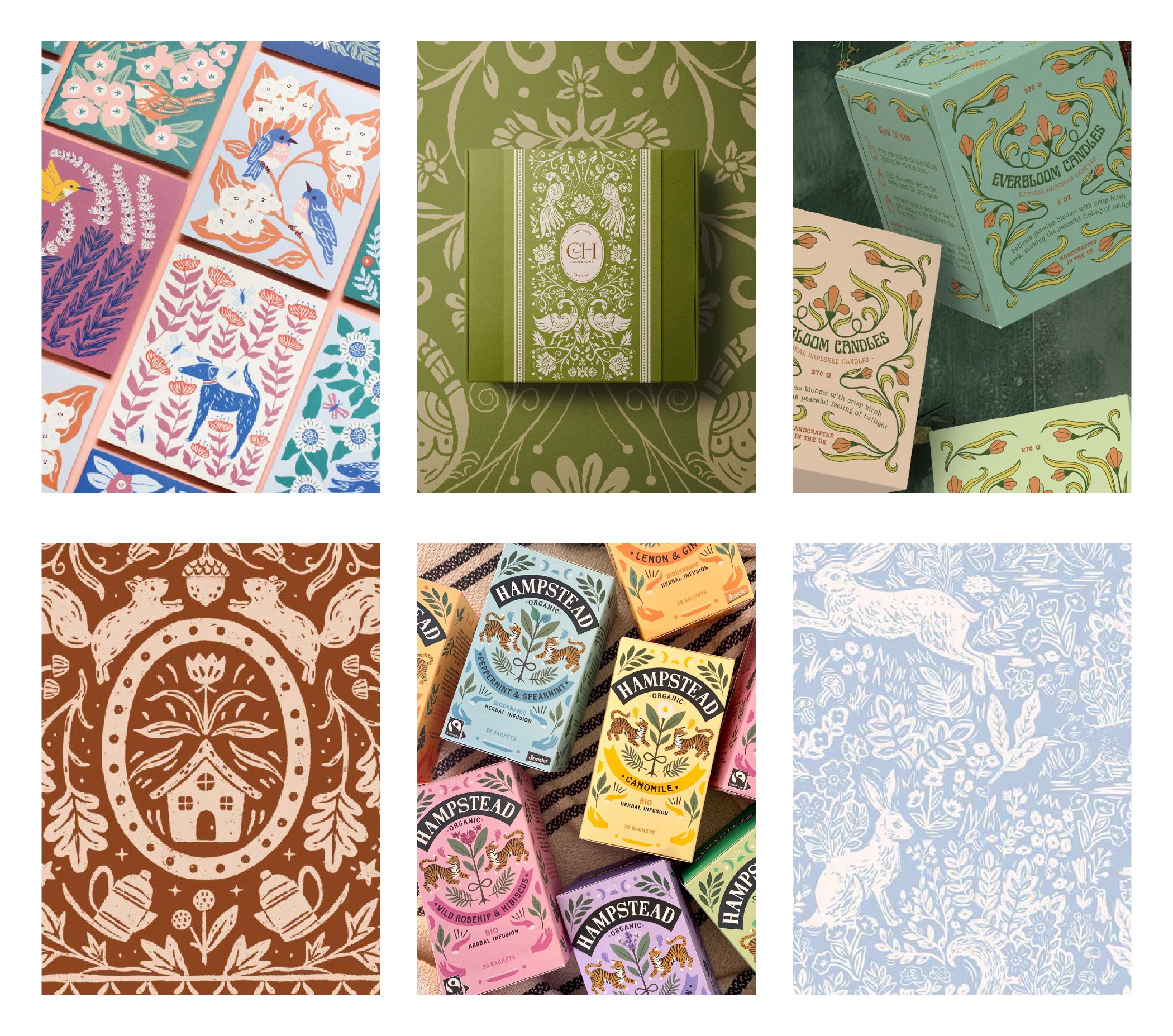
1. Artisan Folk
Artisan Folk is a handcrafted design style celebrating cultural patterns, heirloom motifs, and traditional craftsmanship reimagined for the modern era. We’re loving the storytelling potential here — this style feels like a warm hug from your grandma’s quilt… but make it modern. It reminds us of a lot of Anthropologie’s signature in-store and digital design style.
Characteristics
- Hand-drawn borders, embroidery, or ornamental folk symbols
- Warm, earthy palettes and textured materials
- Vintage typography with decorative details
2026 Implementation
Brands will emphasize storytelling and heritage, using illustrated packaging, tactile print finishes, and culturally inspired motifs in web visuals to evoke authenticity and connection.
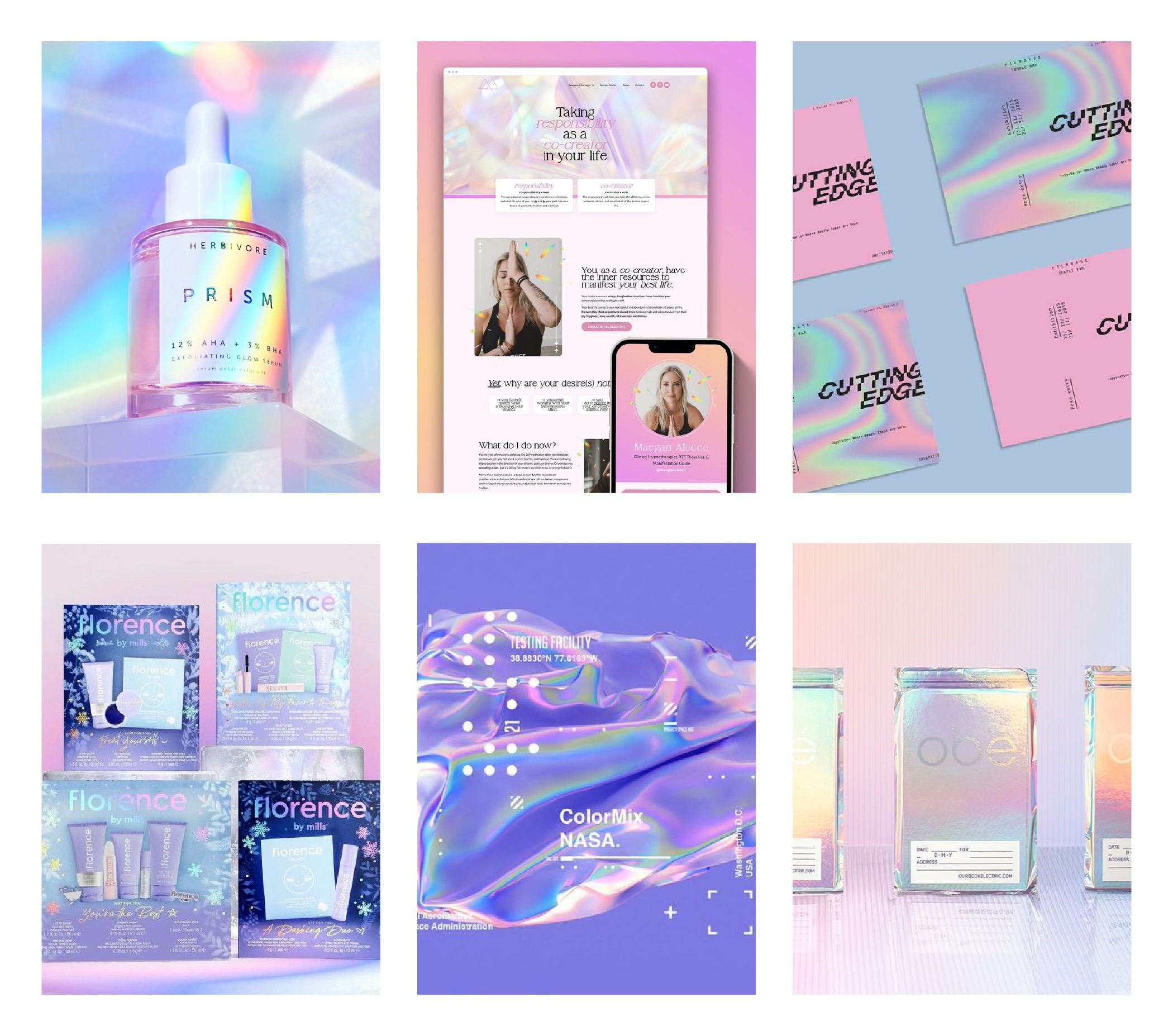
2. Opalescent Futurism
Opalescent Futurism is a luminous, dreamlike fusion of iridescent light, glassy surfaces, and pastel gradients that blur the line between technology and art. It’s sleek, imaginative, and when used just right, it can make a brand feel fresh, fun, and elevated.
Characteristics
- Pearlized, holographic, or glass textures
- Soft gradient transitions in aqua, lavender, blush, and gold
- Minimal, geometric typography with reflective accents
2026 Implementation
Expect to see this aesthetic dominate tech, beauty, and fashion – glassy user interface layers, holographic packaging films, and motion graphics that shimmer subtly to convey innovation and optimism.

3. Micro Industrialism
Micro Industrialism is a utilitarian aesthetic inspired by factory labels, barcodes, and mechanical layouts reinterpreted as clean, intentional design. This one scratches our brains in the best way — it’s orderly, sharp, and you could even call it left-brain friendly. We’re here for it.
Characteristics
- Functional grids, serial numbers, and monospaced typography
- Neutral palettes with accent pops of safety colors
- Structured compositions with technical icons or QR codes
2026 Implementation
Minimalist brand systems will use micro-industrial cues – grid overlays, modular user interface blocks, and product labeling that celebrates precision and practicality while maintaining a minimalist tone.
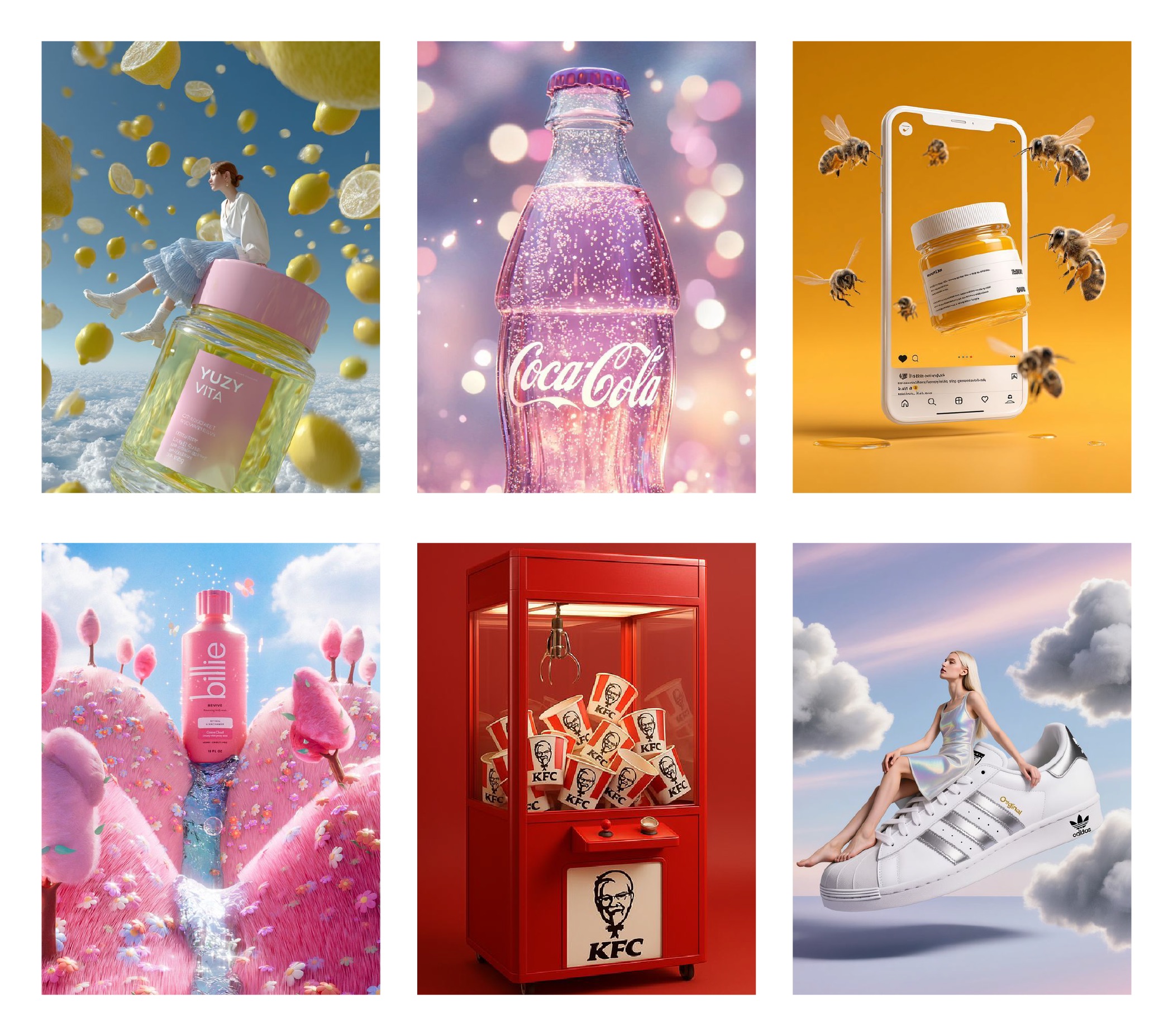
4. AI-Generated Design
AI-Generated Design is a forward-looking trend driven by generative AI tools that merge human creativity with algorithmic spontaneity. We’re exploring this one with equal parts curiosity and caution — when used well, it creates magic and really cool dreamscapes.
Characteristics
- Surreal forms, abstract textures, and adaptive compositions
- Blended realism – organic meets digital distortions
- Infinite variations and evolving visual identities
2026 Implementation
Marketing campaigns will harness AI for logos, concept art, adaptive social graphics, and personalized ad visuals, while packaging and web design adopt evolving generative motifs that adapt to user data.
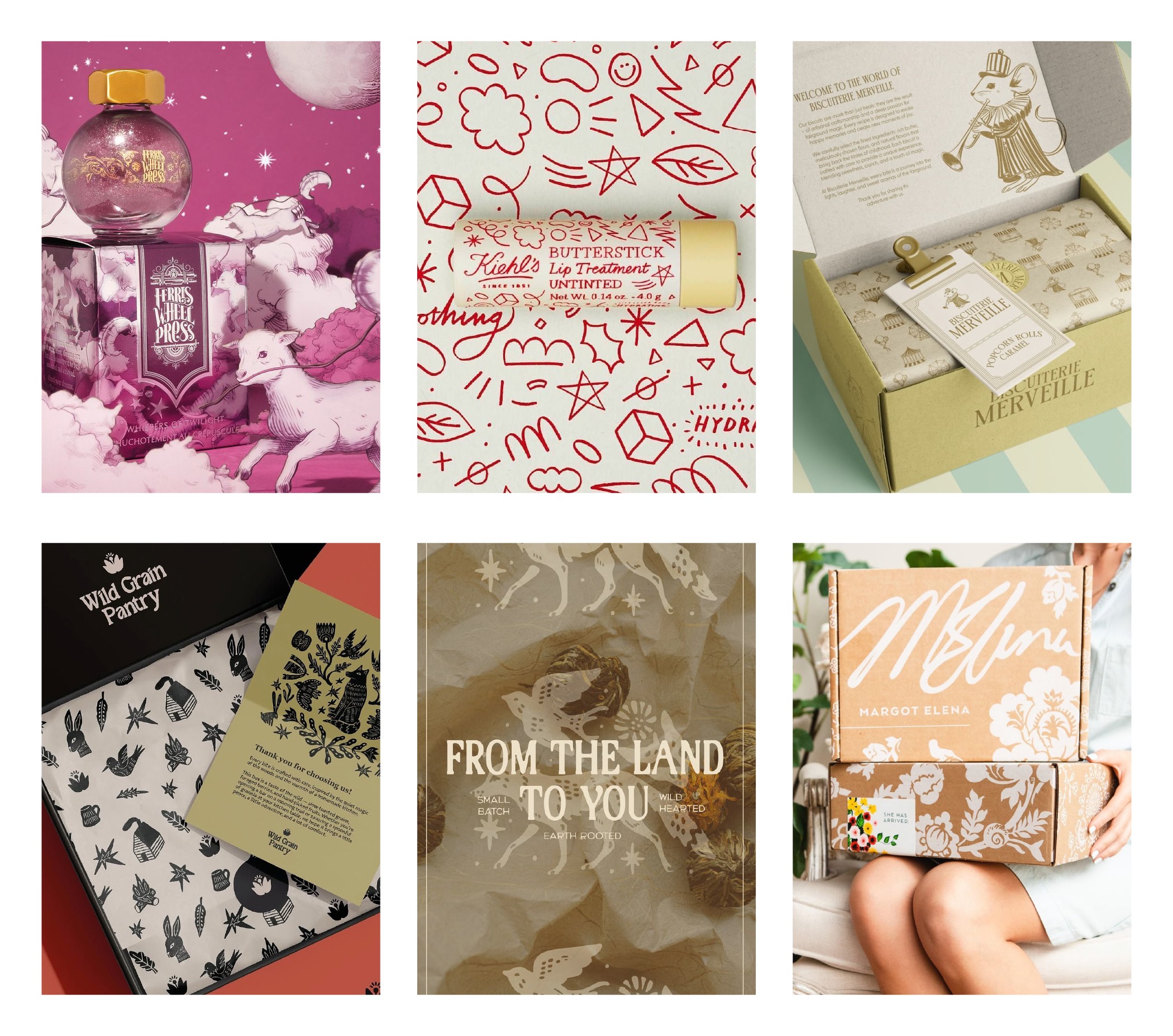
5. Handcrafted Illustrations
Handcrafted Illustrations are expressive, imperfect, and deeply human artwork that brings warmth, individuality, and storytelling to modern branding. There’s something about the hand-drawn that feels real and authentic. In an AI-heavy world, it can feel comforting to embrace the beauty of the human touch when you scroll!
Characteristics
- Visible brushstrokes, ink textures, or pencil lines
- Organic shapes and irregular outlines
- Personal, narrative-driven compositions
2026 Implementation
Hand-drawn elements will reappear on packaging, editorial layouts, and brand storytelling, especially in lifestyle, faith, and wellness sectors, as a counterbalance to digital precision.

6. Neon Noir
Neon Noir is a moody, cinematic style fusing high-contrast dark environments with neon light accents and futuristic urban edge. Dark mode, but make it dramatic; we like using it when a brand needs a bold atmosphere.
Characteristics
- Deep blacks and grays punctuated by electric blues, magentas, or reds
- Glowing typography and motion blur effects
- Cyberpunk, night-city, or vaporwave mood
2026 Implementation
Expect immersive advertising and digital campaigns to use this for emotional impact – video teasers, motion posters, and interactive web backdrops glowing with noir intensity.
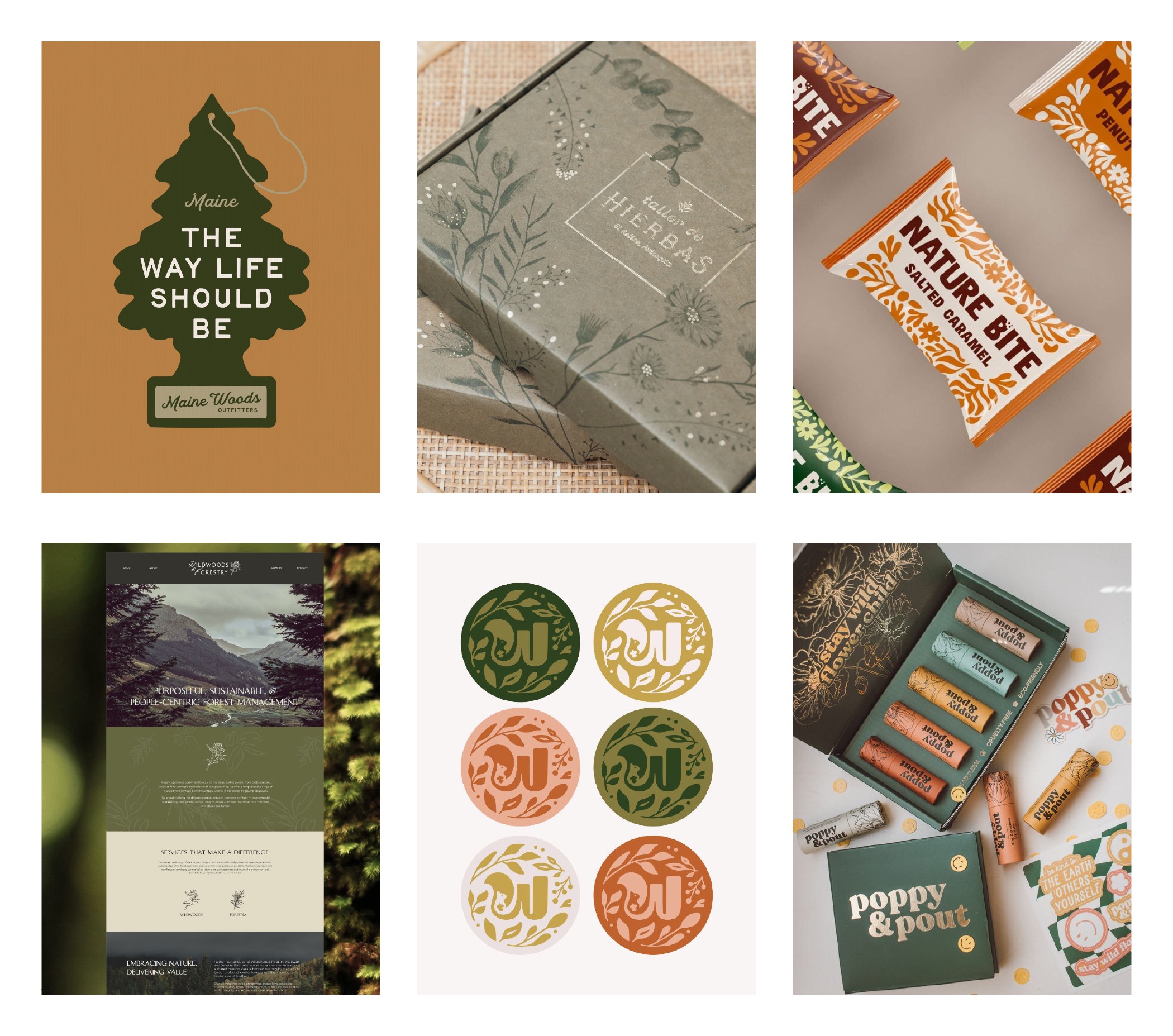
7. Eco-Conscious Design
Eco-Conscious Design is a design philosophy centered on sustainability, transparency, and natural aesthetics that communicate environmental integrity. Not to mention, we love the softness and beauty of this style across digital and print.
Characteristics
- Earthy palettes, recycled textures, and minimalist layouts
- Raw materials like kraft, paper fiber, or unbleached tones
- Honest, low-waste print and digital presentation
2026 Implementation
Eco-branding will extend beyond messaging into material choices – matte uncoated packaging, biodegradable inks, and web design optimized for low energy consumption and accessibility.
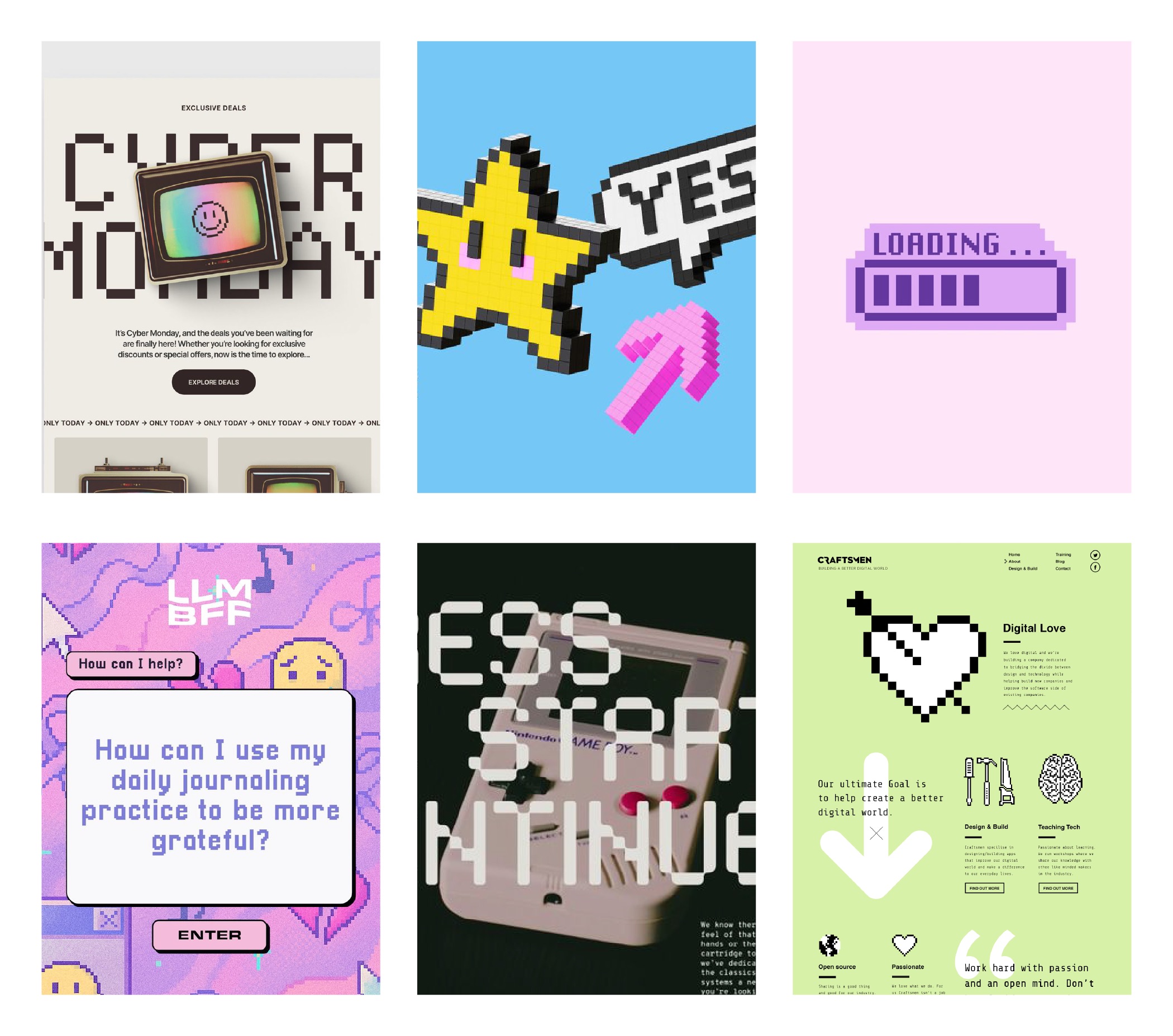
8. Nostalgia Digital
Nostalgia Digital is a reimagining of early-internet and retro-tech visuals that blend pixelated charm with modern clarity. This reminds some of our team members of the earlier days of the Internet, and nostalgia (when used right) can be really fun.
Characteristics
- Y2K gradients, chrome buttons, and 90s typography
- Playful icons and UI-inspired layouts
- Metallic sheens or bitmap textures
2026 Implementation
Web and social design will fuse nostalgia with interactivity; think pixel-inspired animations, retro website motifs, and packaging that playfully references early computing and digital optimism.

9. Mixed Media
Mixed Media is a layered aesthetic combining photography, illustration, typography, and texture to create depth and visual storytelling. We really like how this lets designers play. It’s like visual moodboards that are unexpected, a little chaotic, but totally compelling when done well.
Characteristics
- Collaged compositions and paper-cut textures
- Overlapping transparent layers and tactile contrast
- Juxtapositions of analog and digital media
2026 Implementation
Mixed media will shape print campaigns and hero imagery – combining flat and 3D layers, scanned textures, and motion depth in branding to create immersive, narrative visuals.
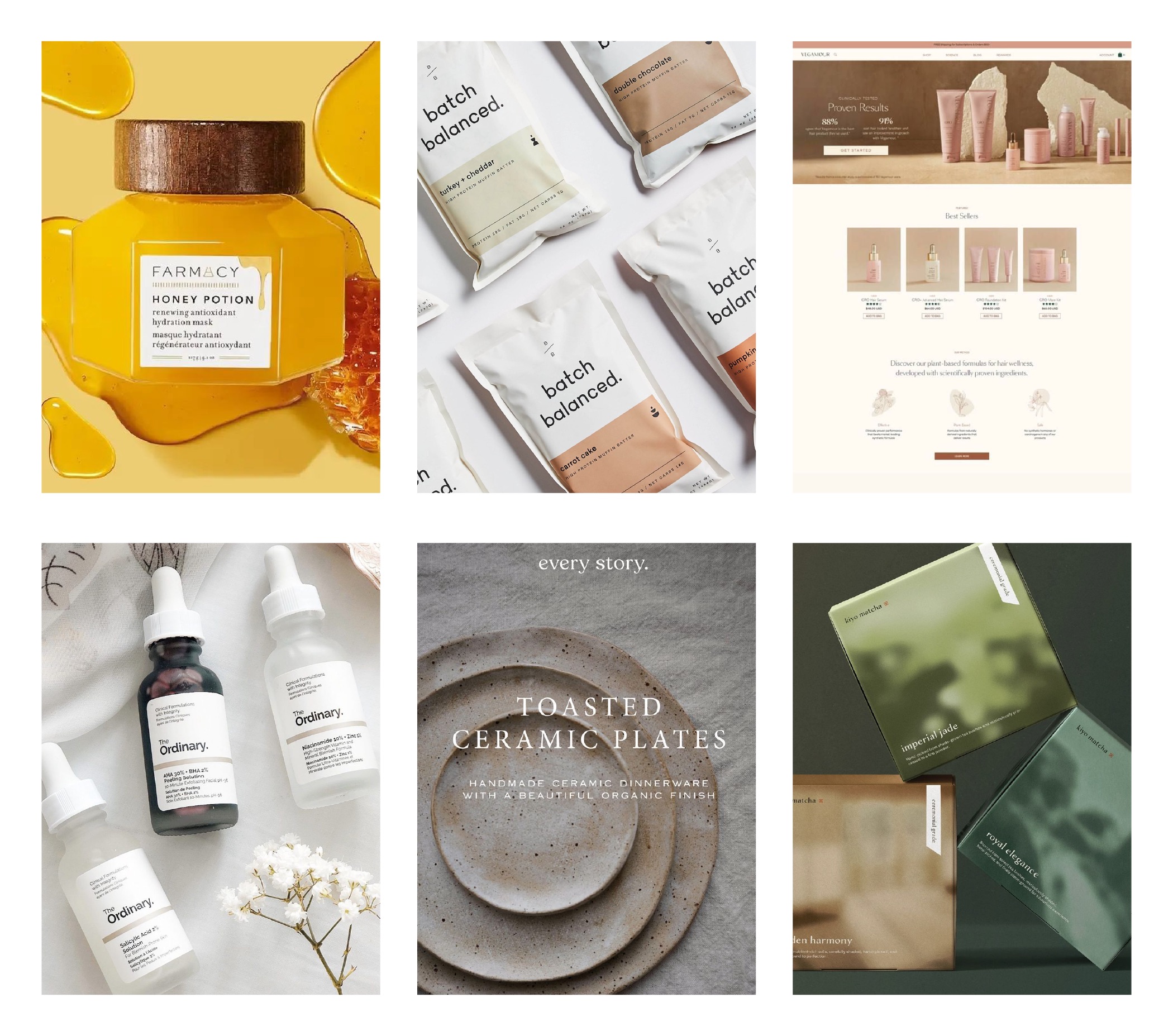
10. Organic Minimalism
Organic Minimalism is a warm, nature-inspired evolution of minimalism that blends simplicity with tactile materials and soothing color. We’re big fans of this one; it’s calm without being cold, and it is clean and simple. This style is perfect for brands that want to feel both modern and human.
Characteristics
- Muted neutral palettes (ivory, clay, taupe, sage)
- Matte textures and natural lighting
- Simple sans-serif or humanist typefaces with generous space
2026 Implementation
This will dominate packaging, lifestyle branding, and web design – balancing clarity and emotion through calm layouts, sustainable materials, and neutral tones that invite trust and peace.
These trends are tools, and when used the right way, they can help your brand feel fresh, intentional, and unmistakably you.
Design trends are most powerful when they’re paired with strategy. That’s what we happened to do best. At Juxt, we apply design thoughtfully to help brands grow, connect, and resonate with real people!
